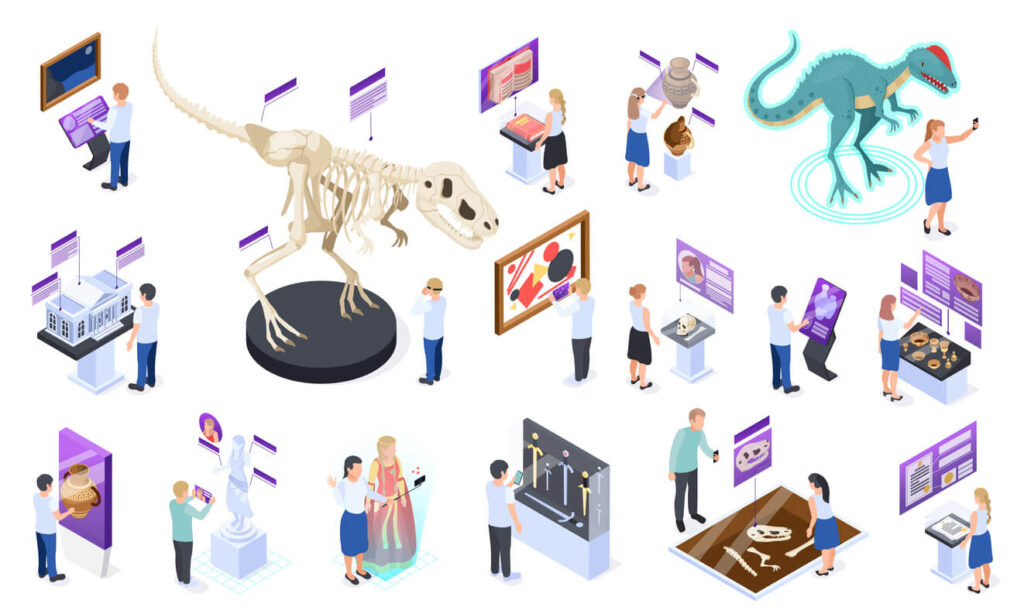Overview
Virtual reality (VR) is growing across all segments of education, from K-12 to higher education, to vocational training. VR offers a unique way of hands-on learning in the classroom. What are the benefits of using virtual reality in the classroom? How possible is it? What are the pros and cons?
What Is Virtual Reality?
Virtual reality is a 3D, computer-generated interactive environment, in addition, explored by a person. In addition, VR technology allows people to step outside of the everyday norm and into a world of different scenarios. The entertainment industry (movies, video games, etc.) currently uses VR. For example, what if it could further the education of all current and future generations?
What Are The Benefits Of Virtual Reality In Public Education?
“VR technology can enable more effective learning at a lower cost and in less time than many traditional learning methods.†– Deloitte Insights
- More Engaged Students: Students are 97% more actively engaged in using VR during a learning session (Lenovo).
- Reduces the Opportunity Gaps: Students now learn and explore beyond the classroom walls, therefore reducing opportunity gaps. Through VR, they can take a trip to another country or get hands-on learning from virtual science labs.
- Cost Reductions for Schools: Distance learning can free up valuable resources and provide opportunities for cost savings and collaboration.
- Interactive Field Trips to Places that Previously Were Out of Reach: Growing demand for virtual field trips continues to rise. These offer interactive and engaging experiences for all ages. From historical events to space travel, to diving into another culture, the possibilities are endless. Nearpod shares its top 10 virtual field trips here.
- Retention: Lenovo found that VR education could help students retain information up to 75 percent compared with 10 percent of merely reading facts. In addition, by offering an experiential learning environment, students are getting hands-on learning. Hands-on learning helps students learn and retain knowledge more than just observing and reading.

What Are Some Ways To Use VR For Learning?
Many virtual vendors have software designed specifically for the classroom. Solutions offer ways to plan a lesson by topic or keyword and then launch the lesson simultaneously on the students’ headsets. Teachers can also use it to allow students to learn at their own pace.
Language immersion is growing in popularity. Students can get a feel for the culture and be surrounded by fluent speakers through augmented and virtual reality. In addition, it gives students the ability to have conversations with virtual people to practice their skills.
From looking inside the human body to prep for surgery, to changing a tire, VR helps students learn practical skills. Virtual reality is beneficial in producing realistic scenarios. For example, engineering students can look at the interworking of machinery and equipment. From storytelling to anatomy, virtual reality allows students to experience real-life scenarios in the classroom.
What equipment is required?
Having this technology in public education requires a few main components:
- Hardware (head-mounted displays, VR headsets, and projectors)
- Software
- Solutions
Some offerings include storage cases for the hardware that has a charging component built-in. More of the storage options help the technology become shareable in a school setting. They are rugged, portable containers on wheels that make them user-friendly for departments to share.
Why Public Education Should Opt for Cloud-Based Solutions
Cloud-based software is a cost-efficient solution rather than on-premises options. Therefore, it eliminates the need for additional infrastructures. Opting for a cloud-based solution offers effective collaboration between students and teachers to improve student engagement. ![]()
Obstacles
- Data Security and Privacy: Augmented and virtual reality does pose questions with data security and privacy concerns. These are associated with weak integration or deployments in the schools. There are concerns about student data and privacy that must be protected. This is especially important with data breaches. Many of these technologies are cloud-based, so making sure that student data is secure is a necessity.
- Navigation: Navigating these virtual environments can be challenging. Offerings from companies like ClassVR have developed a system where simple hand gestures, like a “thumbs up†from a student can help them navigate the platform. Head movements also can control the devices.
Summary
Virtual reality has significant benefits in education. From cost reductions for school systems to more retention for students, the benefits begin to add up. VR is taking one step forward in closing the opportunity gaps for at-risk students, therefore giving them immersive learning options at their fingertips.
We can help. Connect with us.
About Centurion Consulting Group
Centurion Consulting Group, LLC, a Woman-Owned Small Business headquartered in Herndon, VA conveniently located near Washington D.C., is a national IT Services consulting firm servicing the public and private sector by delivering relevant solutions for our client’s complex business and technology challenges. Our executive team has over 25 years of experience individually, to include over 10 years of direct business partnership in the IT staffing, federal contracting, and professional services industries. Centurion’s leaders have demonstrated expertise throughout the past three decades in partnering with over 10,000 consultants and hundreds of clients – from Fortune 100 to Inc. 5000 firms – in multiple industries to include banking, education, federal, financial, healthcare, hospitality, insurance, non-profit, state and local, technology, and telecommunications. www.centurioncg.com
